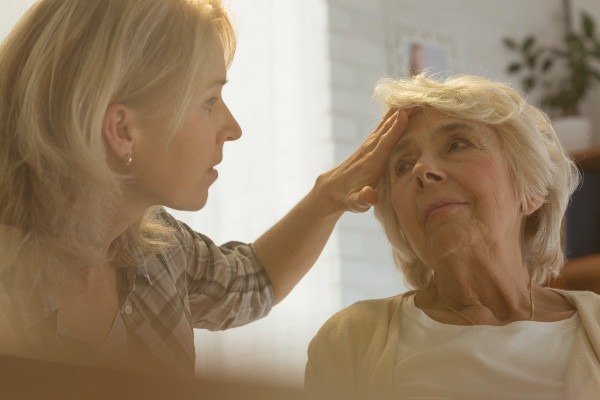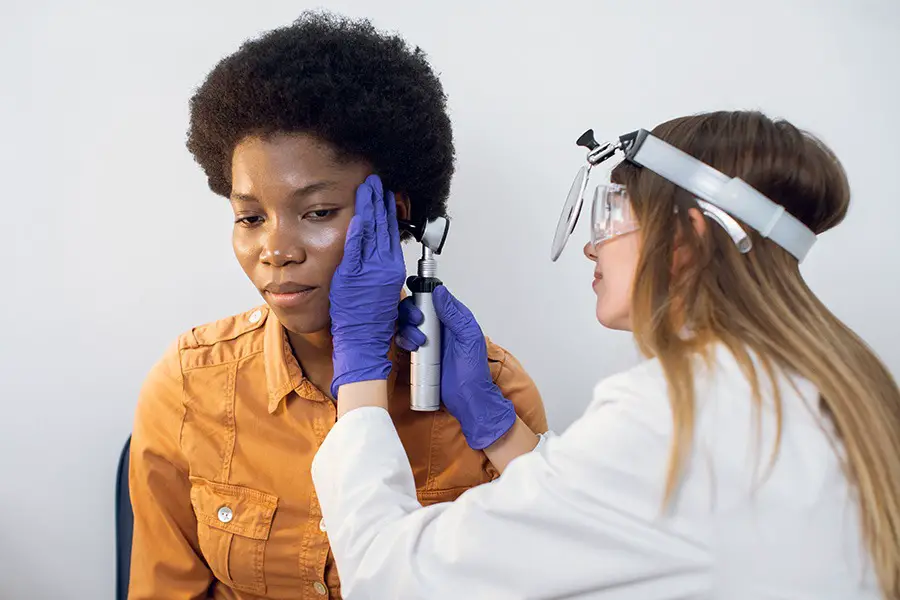Introduction
The intricate world of human hearing is a masterpiece of nature’s design, translating the diverse symphony of sounds that surrounds us into meaningful experiences. However, for numerous adults, the melodies of life are muted due to a condition termed sensorineural hearing loss. This disorder, often complex and misinterpreted, is the most prevalent form of hearing impairment. In this post, we aim to illuminate the multifaceted aspects of sensorineural hearing loss, from groundbreaking research and potential therapies to the various contributing factors. We are committed to providing a valuable resource for adults living with sensorineural hearing loss.
AMZ-Lexie Lumen Self-Fitting OTC Hearing Aids
Experience the Ultimate Sound Quality with Lexie Lumen self-fitting OTC hearing aids. These remarkable devices utilize dual microphones to deliver crystal clear sound, immersing you in a world of auditory excellence. Say goodbye to communication struggles in public spaces or on phone calls, as our Telecoil functionality directs speech directly to your hearing aids via an induction loop system. Rediscover the joy of hearing with unmatched clarity and precision.
Embrace an Active Lifestyle with Lexie Lumen hearing aids. Our cutting-edge sweatproof technology, including Nano coating, safeguards against moisture damage, allowing you to wear your hearing aids during outdoor activities like walks, runs, and open-air events. With Lexie, you can live life to the fullest without compromising on the quality or lifespan of your devices. Don’t let hearing loss hold you back—experience the freedom of superior hearing with Lexie Lumen self-fitting OTC hearing aids.
Heading into the Future: Unveiling Current Research on Sensorineural Hearing Loss
The pursuit for an effective cure for sensorineural hearing loss is a globally undertaken endeavor, with scientists from various disciplines contributing their expertise. Contemporary research is wide-ranging, with efforts directed towards everything from gene therapy to bioengineering. A significant focus is on the potential regeneration of damaged hair cells within the cochlea, the inner ear component that translates sound vibrations into neural signals. Damage to these hair cells leads to sensorineural hearing loss. Current advances hint at the possibility of promoting the regeneration of these cells, offering hope for the reversal of sensorineural hearing loss symptoms.
Exploring Stem Cell Therapy for Sensorineural Hearing Loss: What does Current Research Say?
In the landscape of cell regeneration, stem cell therapy emerges as a promising contender for treating sensorineural hearing loss. Known for their transformative abilities, stem cells hold potential in repairing the impaired hair cells within the inner ear. Early studies have shown promising outcomes. For instance, a study published in the Journal of the Association for Research in Otolaryngology demonstrated that transplanted stem cells could successfully develop into cells similar to native hair cells in mice. This finding signifies a potential direction for human therapy applications.
Deafness: A Journey of Challenges and Triumphs
The Ear’s Structure: How It Relates to Sensorineural Hearing Loss
To grasp the complexities of sensorineural hearing loss, it’s essential to understand the inner mechanisms of our ears. The ear is partitioned into three main sections: the outer, middle, and inner ear. The outer ear captures sound waves and directs them into the ear canal. These sound waves then reach the middle ear, causing the eardrum to vibrate. These vibrations are transferred to the ossicles, three minuscule bones that amplify the sound and send it to the inner ear.
Here, in the inner ear, sits the cochlea, a spiral-shaped structure filled with fluid and lined with tiny hair cells. These hair cells move with the fluid’s vibrations, creating electrical signals that are sent to the brain via the auditory nerve, allowing us to perceive sounds. Sensorineural hearing loss primarily arises from damage to these hair cells or the auditory nerve itself. Comprehending this mechanism is crucial as it can help in devising potential treatments that target these specific structures.
Tinnitus: why it’s still such a mystery to science
Unraveling the Causes of Sensorineural Hearing Loss in Children
Sensorineural hearing loss does not solely affect adults but has a significant impact on children’s lives as well. Multiple factors can cause this condition in younger demographics. Genetic influences often play a central role, with certain genetic mutations leading to hearing loss at birth or progressive hearing loss as the child ages. Additionally, maternal infections during pregnancy, such as rubella or cytomegalovirus, can result in sensorineural hearing loss in the child.
Furthermore, premature birth is another significant contributor, as preterm infants have a higher risk of developing sensorineural hearing loss. Noise exposure, albeit less common in children than adults, can also lead to this condition. Raising awareness about these causes is essential for early detection and intervention.
QUIZ - CURRENT RESEARCH ON HEARING LOSS
Delving into Noise-Induced Sensorineural Hearing Loss: A Closer Look
One distinct cause of sensorineural hearing loss that merits further examination is noise-induced hearing loss (NIHL). Exposure to excessive noise levels over time or a single loud event can cause permanent damage to the inner ear, resulting in sensorineural hearing loss. Occupational noise, recreational activities, and environmental factors all contribute to the risk of developing NIHL.
Understanding the mechanisms of NIHL is instrumental in helping individuals adopt proactive measures to safeguard their hearing. Sound loudness is measured in decibels (dB), and continuous exposure to sounds above 85 dB can be damaging. Occupations like construction, attending loud concerts, or using high-volume headphones for long periods all heighten the risk of NIHL.
Prevention is key when it comes to noise-induced sensorineural hearing loss. Employing strategies such as using hearing protection devices (like earplugs or earmuffs) in loud environments, controlling listening levels during leisure activities, and spreading awareness about the significance of hearing conservation can significantly lower the incidence of NIHL.
Conclusion
In this comprehensive journey through the realm of sensorineural hearing loss, we’ve explored the promising avenues of cutting-edge research and potential cures, including the potential of stem cell therapy. We’ve investigated the complex structure of the ear, shedding light on how sensorineural hearing loss transpires at a cellular level. Moreover, we’ve examined the causes of sensorineural hearing loss in children, emphasizing genetic factors and the effects of noise exposure. Lastly, we’ve provided insight into noise-induced hearing loss and the importance of prevention.
Sensorineural hearing loss presents unique challenges, yet the advancements in research and technology bring hope for enhanced treatments and interventions. By promoting awareness, deepening understanding, and advocating for hearing health, we can enable individuals with sensorineural hearing loss to lead satisfying lives. Remember, early detection, timely intervention, and proactive hearing conservation are crucial in the path to improved hearing and a better quality of life.

Decoding Silence: An Analytical View on the Advances in Conductive Hearing Loss Research and Treatment
This analytical article sheds light on conductive hearing loss, offering an in-depth exploration of its genetic factors, treatment advances, and promising experimental therapies.

Embracing the Melody of Life: Navigating the Journey with Conductive Hearing Loss
A blog post delving into the experiences and challenges of living with conductive hearing loss, discussing its impact on everyday life, social interactions, mental health, and the potential benefits of hearing aids and cochlear implants.





